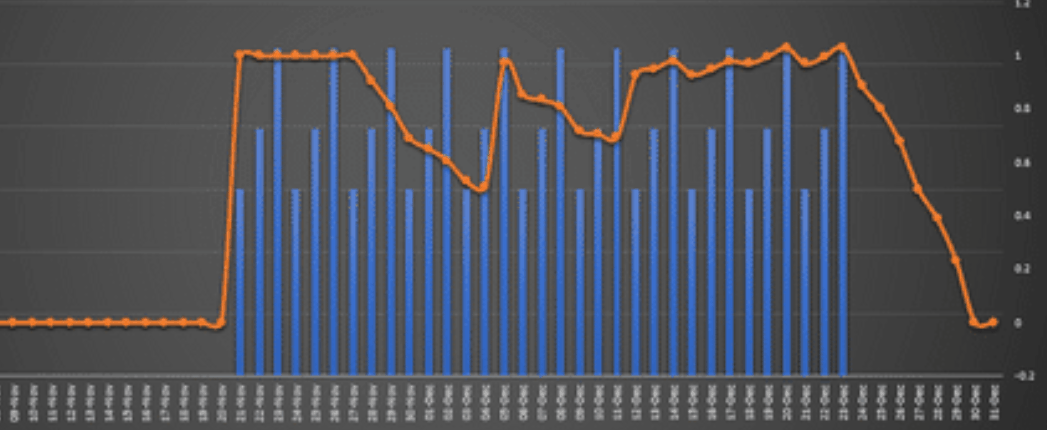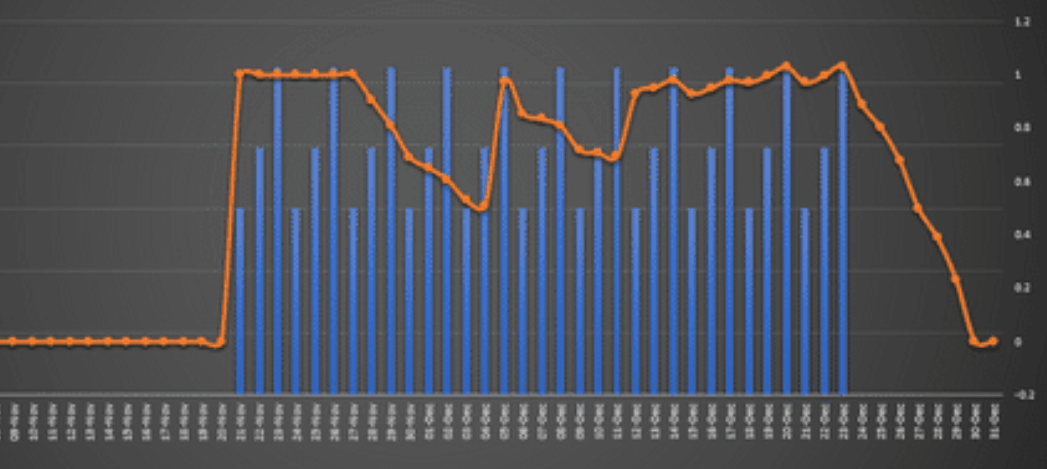Workload efficiency: a new index for external and internal workload?
Your weekly research review
- Background & Objective
- What They Did
- What They Found
- Practical Takeaways
- Reviewer’s Comments
- About the Reviewer
- Comments

Background & Objective
The characterisation of physical performance in soccer matches using absolute parameters (e.g. distance covered) does not provide a comprehensive view of players load and performance.
Therefore, the authors aimed to develop and introduce a new index, known as ‘workload efficiency’, based on internal and external workload ratios. Additionally, they studied how this index was influenced by the training loads during the five days before the match.
What They Did
Fourteen players were monitored with global positioning system and heart rate sensors during forty-four on-field training sessions and sixteen competitive matches. Training loads were classified into five categories based on the number of days before game day (D-1 to D-5).
Match workload efficiency was calculated as the ratio between the equivalent distance (a measure of metabolic power; see HERE) and the modified training impulse (TRIMPmod; see HERE). External load was characterised by duration, total distance, equivalent distance, high speed (>14.4 km. h -1 ), very high speed (>19.8 km. h -1 ), sprinting (>25.2 km. h -1 ), running distances, as well as the number of medium (2.00–2.99 m. s²) and high (>3.0 m. s²) accelerations and the number of medium (-2.00– -2.99 m. s²) and high (<-3.0 m. s²) decelerations.
What They Found
The main findings of this study were:
[optin-monster-shortcode id=”jyyw4xzrpuivfz8gggx4″]
Practical Takeaways
Reviewer’s Comments
“This study suggested a new workload efficiency index, where the external load consisted of the equivalent distance and a modified training impulse. As the authors described, the equivalent distance “represents the distance that a player would have covered theoretically at a steady pace on grass using the total energy spent over the match or training”.
After calculating the match workload efficiency index, the authors analysed how different locomotive measures affected this index. Personally, I think that care must be taken when utilising such models, as they don’t account for possible heart rate responses to psychological factors (e.g. match-related stress, environmental factors (e.g. air temperature, humidity and height above sea level) or nutritional strategies (e.g. caffeine intake). Furthermore, the analysis used in this study provided a team average based model, neglecting important non-training related factors, such as playing position or player’s age.
As a practitioner, I always like to understand what is interesting, important, or a determinant for an athlete’s or team’s success. I believe this index is interesting, but still far off to being used in a way that will affect any athlete or team’s training schedule.”
Want to learn more?
Then check these out…
Watch this video
Read this article
Read this article
Listen to this article
The full study can be read here.
Want more research reviews like this?
Every coach understands the importance of staying up-to-date with the latest sports performance research like this, but none have the time, energy, or even enjoys spending hours upon hours searching through PubMed and other academic journals. Instead, your precious time is better-spent coaching, programming, and managing all the other more important aspects of your job.
The solution…
The Performance Digest
The Performance Digest is a monthly summary of the latest sports performance research reviewed by our team of hand-selected experts. We sift through the 1,000+ studies published in the realms of sports performance every, single month and review only those which are important to you. Each monthly issues contains 19 research reviews in all of the following disciplines:
This comprehensive topic base ensures you’re constantly expanding your knowledge and accelerating your career as quickly as humanly possible. The reviews are also hyper-focused, 1-page summaries, meaning there’s no jargon or wasted time. We cut right to the chase and tell you what you need to know so you can get back to coaching.
Join the thousands of other coaches who read it every, single month. Click here to grab your FREE copy…
[optin-monster-shortcode id=”nhpxak0baeqvjdeila6a”]


